Introduction to top 15 herbs to grow on the terrace: The terrace garden is a feature of the city. In modern times, homes do not have lawns, gardens, or yards. Cities and towns are replacing such homes with skyscrapers. Thus, home gardens disappear, leaving only roofs, terraces, and balconies for gardening. The terrace garden features blooms, plants, shrubs, and herbs. Many of us enjoy being surrounded by greenery; we enjoy getting fresh air; we feel at home in the greenery.
Guide on top 15 herbs to grow on the terrace, basics of terrace gardening, tools and equipment needed top herbs to grow on the terrace, tips and faq
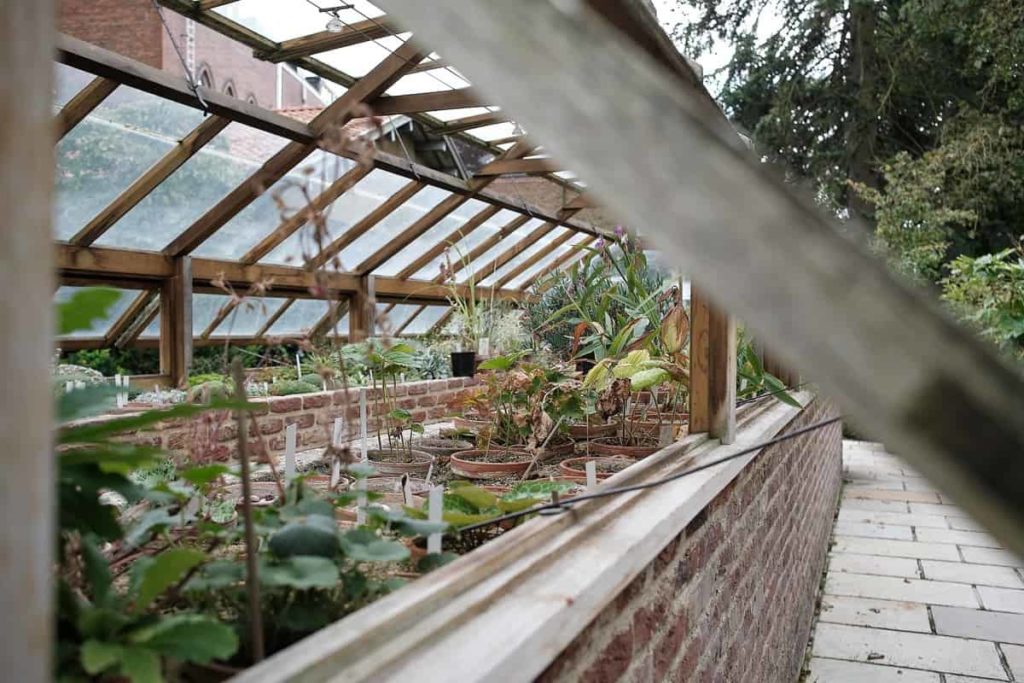
Basics Of terrace gardening
Make a checklist and keep the following things in mind once you decide to build your terrace garden. Create a sketch/layout of your terrace garden: Prepare your rooftop garden by sketching it before you begin gardening. Think about how you are going to plant your greens. Plant them in containers, raised beds, or make use of your terrace’s vertical space. You can also make a sitting arrangement in the middle of your garden for a daily dose of nature. Use trellises, raised beds, and vertical planters to maximize your space.
Tools and equipment needed for terrace gardening
our terrace garden will benefit from these gardening tools. You can stick to this list of gardening tools and avoid the hassle of going to the gardening store. Start strong with these five tools.
- Hose Pipe or Watering Can
- Gardening Rake
- Trowel
- Pruning Scissor
- Shovel
Preparation of soil
Plants are healthier when the soil is healthy. The soil must be well nourished and well-conditioned for suitable plants to grow. Add organic compost to the soil for a good potting mix. You should not have too much-compacted soil or light soil in your terrace garden. It is suitable for plants to have a crumbly texture to retain moisture. Regularly compost your soil with organic matter.
Water can wash away essential nutrients from rooftop gardens. Fertilizing them will maximize their yield. However, please do not use chemical fertilizers since they penetrate your soil and harm good bacteria and microbes. Instead, add equal red sand, organic compost, and coco peat to your potting mix. It would help let the potting mix settle for a week or two before using it in containers. Ensure your potting mix has a balanced texture. If you want your soil to stay healthy, you can fertilize it periodically. Fertilizing your soil will ensure the health of your greens.
Waterproofing
The first step to building soil patches and raised beds on your terrace should be waterproofing. It will shield your terrace against any damage that could occur. The best thing about waterproofing is that it only has to be done once. During the construction of a terrace garden, waterproofing is an essential step. Before you begin construction, you lay the foundation for the building.
In case if you miss this: Top 30 Vegetables to Grow on the Terrace
However, the people living in and around a building may find it challenging to care for leaks and roof damage. Various methods are used to waterproof a building. Polymer coating on the concrete slab is one of the best ways to waterproof your roof. After the coating has been applied, you can start your terrace garden.
Putting up wind barriers
The installation of wind barriers can help protect your plants if they are exposed to strong winds. Wind barriers can reduce wind pressure and provide shelter to your plants. Make sure you build your wind barriers according to the wind direction. Windbreakers such as trellis, hedges, fences, or shelterbelts can be effective. If you install a wind barrier, make sure it reduces wind pressure and allows proper air circulation for your plants. It is not necessary to spend a lot of money on wind barriers. It is possible to build one yourself with a bit of help. Trellises provide the best wind barrier.
Sun/Shade
Calculate the hours of sunlight you receive on your balcony and where you get the most sun. After picking your plants, please place them in locations that receive ample sunlight. Your balcony may be shady, so you can choose plants that do well in less sunlight. Pick plants that will get indirect sunlight on your balcony based on the available hours. Spinach, mustard, kale, chard, lettuce, mizuna, Arugula, and komatsuna can all thrive in partial shade, but they need some amount of sunlight every day to flourish.
Watering
Watering plants in your rooftop garden is similar to those in your regular garden. The only difference is that you need a proper drainage system for excess water to drain off your terrace garden. You can then use a watering can or a hose to water your plants. Keeping your plants hydrated and supporting photosynthesis can both be accomplished by watering them in the morning. Since terrace gardens are shallow, the soil rapidly dries out. Therefore, your plants will remain healthy and hydrated if you water them every day.
In case if you miss this: Top 20 Quick Growing Herbs In Pots/Containers

Mulching
It is essential to keep your plants hydrated and healthy by mulching them. All pests are kept away from your plants if you mulch them. It will also help your plants retain moisture for a more extended period. Mulch is made from hay, wood shavings, or fruit peels.
Best Top herbs to grow on the terrace
Rosemary
The aromatic, needle-like rosemary leaves add a welcome depth of flavor to roasted potatoes and chicken dishes. Rosemary is an annual, but it is quickly brought indoors once the days start getting shorter in mid-autumn by growing it on the terrace. The most common rosemary cultivars grow upright but a few cascades down, so they are ideal for pots and planters. The upright cultivar Gorizia has large leaves, and the Arp variety is cold-tolerant. An easy way to kill container-grown rosemary is by overwatering it; rosemary needs consistent moisture, not wet feet.
Thyme
Its low maintenance, drought tolerance, and ability to tolerate neglect make it one of the best herbs for terrace gardening. Plus, the tiny leaves grow over the pot’s edge when planted at the front of a container. Give it full sun and don’t overwater; it’s drought-tolerant and likes dry soil. If you are looking for a strong lemon flavor and a yellow and green leaf, then English thyme or Lemon thyme are great choices.
Parsley
In case if you miss this: Vegetable Gardening Ideas At Home
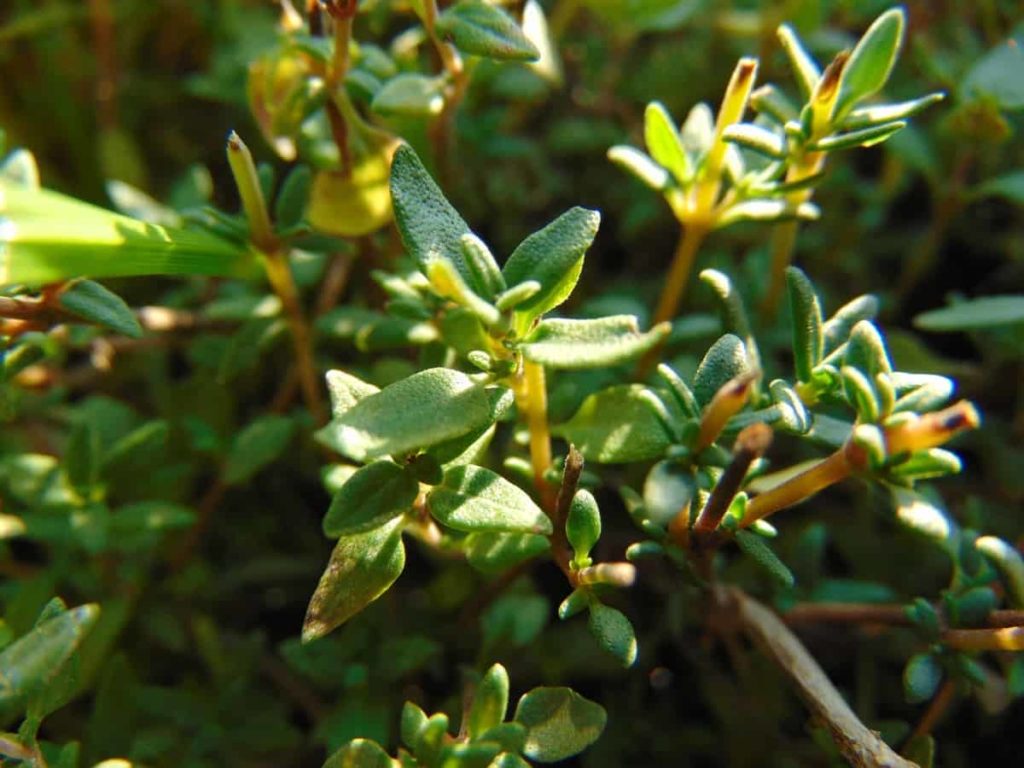
Although it can also be grown annually, it is a biennial herbaceous plant. It overgrows from seed. It doesn’t mind if you put it in the sun or the shade. The soil type doesn’t matter to parsley either. Just make sure not to compact the soil too much. Herbs have never been easier to grow on the terrace.
Mint
Herbs like mint are very aromatic and grown in pots or gardens. A supply of mineral fertilizers or natural organic fertilizers is necessary to spread heavily. In the partial shade, it grows better. A new plant can be quickly propagated by dividing the root ball from a cutting.
In case if you miss this: Top 30 Quick Growing Fruits In Containers/Pots
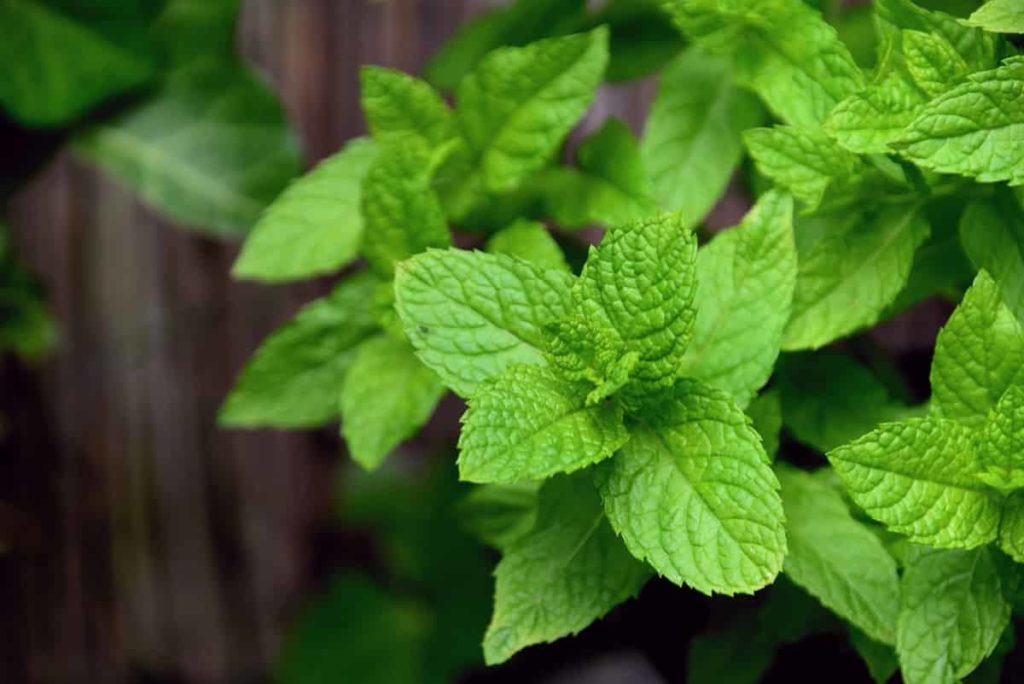
Lavender
Lavender is a favorite herb for gardeners because it can grow in various climates. You can enjoy its soothing color and sweet aroma in your garden or home when it is fresh.
Dill
The dill flavor is sharp and tangy, similar to fennel and carrot. Suitable for soups, dals, sauces, and dishes that include potatoes, meat, and fish. To grow dill, sow seeds directly in the desired location or pot the plant in well-draining loam soil and water it regularly. Dill grows best in a pot 10-12 inches deep when grown on a balcony or terrace.
Chamomile
Chamomile is a small plant with white petals dried and made tea. You can grow the German variety of chamomile in your balcony garden to make tea. Chamomile has been shown to relieve stress, and it is a relaxing tea that may aid in sleeping. You can also reduce menstrual cramp pain when upset stomach, irritable bowel syndrome, or irritable bowel syndrome.
Sage
The toughest herb, sage, prefers full sun situations, especially in a cool climate. Keep sage in a warm location. Sage is capable of growing in a variety of soil types. It is recommended to have well-draining and permeable soil with little organic matter. You can grow sage in pots in subtropical or tropical climate zones by growing it in slightly clayey soil and providing shade in the afternoon. Overwatering must be avoided.
Oregano
Aromatic herbs are a favorite of many people. Growing freely in the Mediterranean and West Asia, it has been known for centuries. It is not difficult to grow oregano. You can grow it from seeds or cuttings or buy some potted plants for your garden in the spring. Plants older than 3-4 years should be removed and replaced with new plants.
Lemon Verbena
Lemon verbena flourishes in warm climates since it is a subtropical herb. Direct sunlight is therefore ideal for growing the herb. However, it is best to grow lemon verbena in pots to protect it from frost in cooler zones.
Rue
Although used sparingly in recipes, it is an ornamental medicinal herb. The herb is not very popular, but it is a great way to repel insects from your garden. Growing in USDA Zones 4-9, it prefers partial shade or full sun and protection from strong winds. In addition, it prefers poor soils with plenty of calcium.
Curry Tree
Grow the aromatic tree plant for more flavor in South East Asian foods and Indian curries. Curry trees are unusually low-maintenance tropical herbs that are drought-resistant, even though they don’t tolerate frost. You can grow it and protect it during the winter in a pot, and it’s easy.
In case if you miss this: Onion Companion Plants, Onion Planting Guide
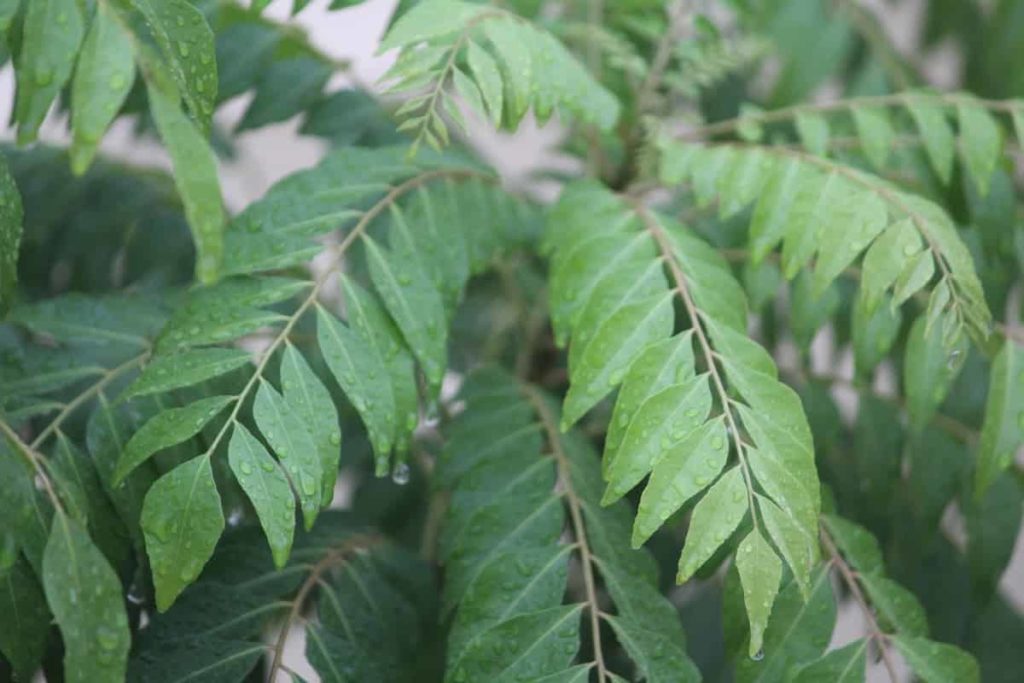
Bay Leaf Tree
We end our list with yet another tiny- to medium-sized tree that is easy to grow. Bay leaves are great for adding flavor to soups and stews. Plants in this genus may not be hardy below zone 8 and require winter protection. Keeping this Mediterranean herb indoors is the best way to overwinter it.
Chives
Herbs such as chives are among the hardiest that you can grow. You can grow them in pots. Chives are an excellent addition to soups, dips, and baked potatoes. When you plant chives, they’re perennials, which means that they’ll grow again and again.
Coriander
Coriander is a culinary herb, both fresh and dried. It grows up to twenty inches tall and has clusters of tiny white flowers at the ends of the stalks. Kitchen gardens may have difficulty growing this herb, especially in hotter climates. It is best to plant it in the balcony garden in the spring or fall when the weather is cooler.
In case if you miss this: Lilac Flower Gardening, How To Start, Tips, Ideas
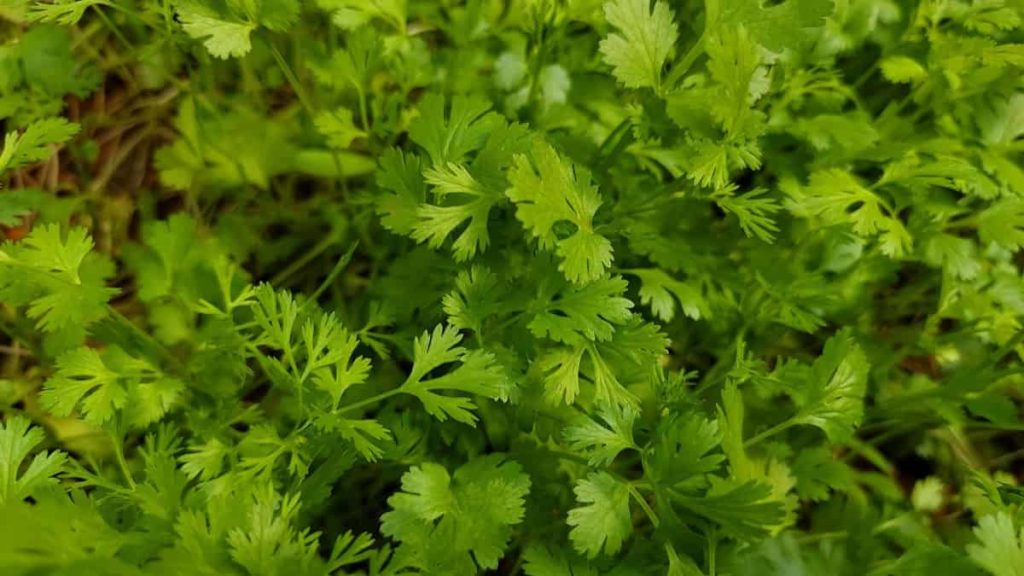
Tips for growing herbs on the terrace
Choose suitable containers
Using containers with adequate drainage is key to growing herbs on the terrace. There are drainage holes in most plastic and wooden pots, but they are easily added to wooden or plastic pots. Fabric planters come in a wide range of sizes, such as Smart Pots. Individual herb plants fit into small pots, while larger pots are perfect for instant herb gardens on decks and patios.
Fill containers with high-quality potting soil
If you fill your containers with garden soil, it quickly compacts in pots, reducing drainage and pore space. Alternatively, fill your pots with potting soil or a mixture of potting soil and aged compost. Adding a handful of worm castings to containers is easy to boost moisture retention and soil nutrients.
Harvest regularly
Don’t be shy about pinching and clipping your herb plants frequently to encourage new growth.
Water regularly
If you’re new to herb gardening, do a little research first. Thyme, oregano, and rosemary prefer very well-drained soil, whereas mint, coriander, and lemon balm thrive in moist soil. You can water herbs for the terrace garden as needed.
Feed as needed
Feed your herbs a fertilizer designed explicitly for edible plants for healthy growth.
Commonly asked questions about herbs to grow on the terrace
1. What is the best way to grow herbs on the terrace? What are the best soil and fertilizer to use?
You can prepare a potting mixture by adding equal parts of regular soil, vermicompost, and sand. However, it is essential to note that all the essential nutrients may wash away from the soil after rain. Therefore, keep your plants healthy by replenishing the soil every month. Not only will you enjoy fresh air and tranquility, but you will also receive daily organic greens.
2. What steps for setting up an herb garden on a terrace?
- Understand the Sunlight
- Choose a location
- Prepare an area for planting
- Add plants to the soil
- Adequate water supply
- Know how to harvest
3. Is it better to grow herbs in the sun or the shade in a terrace garden?
Herbs require a fair amount of sunlight to grow. Therefore, herbs do best when they are in a space where they get at least 4 hours of sunlight each day. However, rosemary, lavender, and basil can withstand more significant amounts of sunlight (6 – 8 hours a day).
4. Herbs growing on terraces need drainage?
A well-drained garden is ideal for growing herbs. Root problems such as rot quickly result from poor drainage. Make sure roots receive air and water by providing coarse, fast-draining soil. Water must freely flow through drainage holes in containers containing herbs.
5. What are the steps to starting a small herb terrace garden?
- Choose a pot that fits your needs
- Place Yates Premium Potting Mix in the pot
- Seed the potting mix with Yates herb seeds
- Ensure that the pot is positioned appropriately for the herbs you choose
- Keep the potting mix moist while the seeds are established
- Ensure the young herbs grow strong and healthy by feeding them Yates Thrive All Purpose Soluble Plant Food every two weeks
- Start harvesting when the leaves are entire
- Gongura Seed Germination and Planting Methods
- Cabbage Seed Germination and Selection
- Broccoli Seed Germination and Selection
- Asparagus Seed Germination and Variety Selection
- Seasonal Flower Gardening: Best Practices for Spring, Summer, Fall, and Winter
- How to Grow Hibiscus from Flower
- Plantation Ideas for Home Decoration: A Beginners Guide
- Flower Garden Designs and Layouts for Beginners
- Planting and Spacing Techniques in Papaya: A Beginner’s Guide
- Growing Gold: Essential Techniques for Planting Pineapples
- How to Make Kalanchoe Plant Bushy: Home Remedies and Solutions
- 11 Reasons Why Your Gardenia is Not Blooming: Home Remedies and Solutions
- Eco Elegance: The Guide to Designing a Drought-Tolerant Landscape
- Gardening on a Slope: Strategies for Hillside Landscaping
- Nourish and Flourish: Top Organic Mulches for Thriving House Plants
- Everything You Want to Know about Indian Mogra Flower: Discover Uses and Growing
- Green Thumb Success: Expert Tips for Cultivating Greenhouse Pumpkins All Year Round
- Maximize Growth & Flavor: The Ultimate Guide to Companion Planting in Herb Gardens
- How to Control Rhododendron Problems Naturally: Home Remedies and Organic Ways to Fix Them
- Natural Magic: The Remarkable Benefits of Cinnamon for Plants
- Best Steps to Revive Dying Tulip with Natural and Organic Treatment
- 10 Reasons Why Your Angel Trumpet is Not Blooming: Remedies and Treatment
- How to Fix Periwinkle Leaf and Flower-Related Problems: Natural Remedies and Solutions
- How to Fix Zinnias Leaf and Flower Problems: Discover Natural and Home Remedies
- Organic Steps to Induce Lemon Tree Flowers: A Comprehensive Guide
- Bloom Booster: Crafting the Perfect Homemade Bougainvillea Fertilizer
- Optimizing Growth: A Guide to Applying NPK Fertilizer for Potted Plants
- 10 Best Homemade Fertilizers for Rubber Plant: DIY Recipes and Application Method
- How to Boost Female Pumpkin Flowers: Effective Steps for More Flowers and High Yields
- Transform Your Indoor Garden: Top Benefits of Pink Salt for Houseplants
- 10 Best Homemade Fertilizers for Peacock Plants (Calathea): Easy DIY Guide
- Unlock Blooms: 9 Reasons Why Your Potted Chrysanthemum is Not Blooming
- 8 Reasons Why Your Potted Hibiscus is Not Blooming: Fix it with Simple Solutions
- Unlock Blooms: 9 Key Reasons Your Potted Frangipani Won’t Flower
- 10 Reasons Why Is My Ice Plant Not Blooming: Remedies and Treatment
- 10 Reasons Why My Potted Hydrangea Not Blooming: Treatment and Remedies